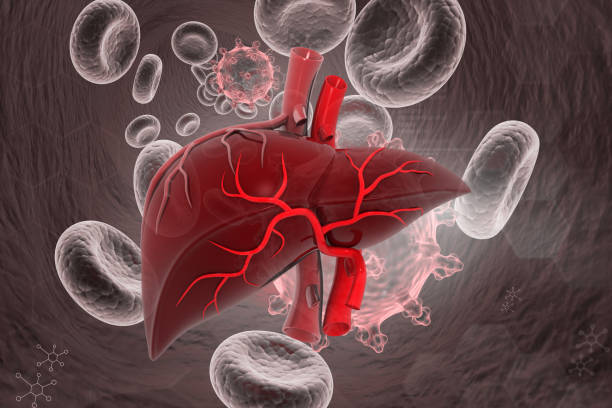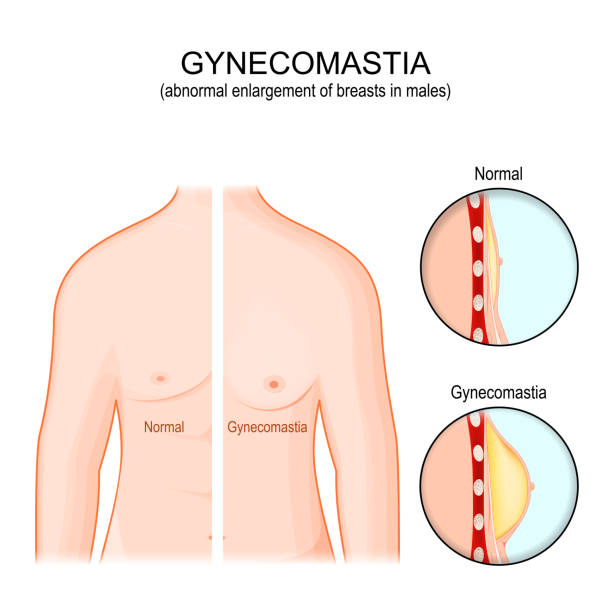Liver cirrhosis is a severe liver condition marked by scarring and impaired function. Gynecomastia is the enlargement of male breast tissue. It is one of the many complications associated with liver cirrhosis. Dr. Harikiran Chekuri, a well-known name in gynecomastia surgery in Hyderabad, says:

“Liver cirrhosis disrupts the body’s ability to metabolize hormones. It leads to an imbalance where estrogen levels rise, and testosterone levels fall. This hormonal imbalance is a key factor of gynecomastia in liver cirrhosis. Understanding this connection is crucial for effective diagnosis and treatment.”
This blog delves into the relationship between liver cirrhosis and gynecomastia. We shall examine the causes, symptoms, diagnostic methods, and preventive methods.

Causes of Gynecomastia in Cirrhosis
The connection between liver cirrhosis and gynecomastia is due to:
Hormonal Imbalance
- Change In Estrogen Levels
The liver helps break down estrogen. When cirrhosis occurs, the liver’s ability to process estrogen is reduced. Damaged liver cells can produce more estrogen. This further increases the hormone’s levels in the bloodstream.
- Decreased Testosterone Levels
Liver cirrhosis can lead to increased breakdown of testosterone and often causes hypogonadism. Hypogonadism is when the testes produce insufficient testosterone, contributing to gynecomastia.

Impaired Metabolism
The liver’s reduced capability to metabolize and clear hormones exacerbates hormonal imbalances.
Altered Hormone Binding
Liver damage affects the proteins that bind to hormones. It alters their levels and activity in the body.
How Common is Gynecomastia Caused by Liver Cirrhosis?
Gynecomastia is a frequently observed complication in individuals with liver cirrhosis. Research indicates that 55% to 65% of men with cirrhosis may develop gynecomastia. The prevalence depends on:
- the severity of the liver disease
- the duration of the liver disease
- individual health factors
Symptoms of Liver Cirrhosis Causing Gynecomastia

Patients with liver cirrhosis-induced gynecomastia experience:
- Noticeable increase in breast tissue size, often affecting both breasts but sometimes more pronounced on one side.
- Discomfort, tenderness, or pain in the breast tissue, which can range from mild to severe.
- Swelling and increased sensitivity in the nipple area.
- In rare cases, a milky discharge from the nipples may occur, which needs prompt medical attention.
- Additional symptoms related to liver cirrhosis, such as jaundice (yellowing of the skin and eyes), abdominal swelling, fatigue, and confusion.
Noted gynecomastia specialist Dr. Harikiran Chekuri cautions, “The physical changes can lead to psychological impacts, including anxiety and depression. It’s imperative to address both the physical and emotional aspects of gynecomastia and cirrhosis to ensure comprehensive care and support for patients.”
Impact on Patients

Gynecomastia can significantly affect patients both physically and emotionally:
Physical Discomfort: Enlarged breast tissue can cause pain and tenderness, affecting daily activities.
Psychological Impact: Men with gynecomastia may experience embarrassment, low self-esteem, and social anxiety.
Social Challenges: Patients may exhibit reluctance to engage in activities that expose the chest, such as swimming.
Quality of Life: The combination of physical and emotional distress can lead to a reduced quality of life.
Complications: Potential for misdiagnosis, leading to unnecessary treatments or procedures.
Additional Health Issues: Liver cirrhosis itself can cause numerous health problems, compounding the impact of gynecomastia.
Diagnosis
Diagnosing gynecomastia caused by liver cirrhosis involves several steps:
- The doctor conducts a thorough review of the patient’s medical history, including liver disease, alcohol use, and medication intake.
- Physical examination involves assessing the breast tissue for enlargement and tenderness.
- Blood tests help evaluate liver function, hormone levels, and markers of liver damage.
- In some cases, a liver biopsy may be necessary to confirm the diagnosis of cirrhosis and assess its severity.
- In uncertain cases, a biopsy may be performed to rule out breast cancer in men.
- Ultrasound or mammography assess breast tissue changes and help rule out other causes like tumors.
Types of Gynecomastia Caused by Liver Cirrhosis
- Glandular Gynecomastia involves an increase in glandular breast tissue due to hormonal imbalance. It is typically symmetrical and can be tender.
- Pseudogynecomastiainvolves fat accumulation without an increase in glandular tissue. It is often seen in obese patients with liver cirrhosis.
- Mixed gynecomastiais a combination of both glandular tissue growth and fat accumulation. It is the most common type seen in liver cirrhosis patients.
How is Gynecomastia Caused by Liver Cirrhosis Treated?

Treating gynecomastia caused by liver cirrhosis involves addressing both the liver condition and the breast tissue enlargement:
Hormonal Therapy: Medications can help balance hormone levels and reduce estrogen effects.
Medications: Selective estrogen receptor modulators (SERMs) like tamoxifen may be prescribed.
Lifestyle Changes: Reducing alcohol intake, maintaining a healthy diet, and managing weight can improve liver function.
Surgical Options: Mastectomy or liposuction may be considered in severe cases where other treatments are ineffective.
Addressing Liver Cirrhosis: Managing the underlying liver condition is crucial. This includes lifestyle changes, medication, or potentially liver transplantation.
Monitoring: Regular follow-ups can aid in tracking hormone levels and breast tissue changes.
Effective Ways to Prevent Gynecomastia Linked to Liver Cirrhosis

Preventing gynecomastia involves managing liver health effectively:
- Get timely treatment for liver diseases to prevent cirrhosis progression.
- Steer clear of drugs and substances harmful to the liver (Hepatotoxic substances).
- Track hormone levels in patients with known liver conditions.
- Eat a balanced diet rich in essential nutrients to support liver function.
- Reduce or eliminate alcohol intake to prevent further liver damage.
- Consume a balanced diet rich in fruits, vegetables, and lean proteins to support liver function.
- Engage in physical activity to maintain a healthy weight and overall health.
- Avoid medications that can worsen liver damage or cause hormonal imbalances.
- Schedule routine check-ups with a healthcare provider to monitor liver health and catch early signs of complications.
- Address liver health issues promptly to prevent the progression of cirrhosis and associated conditions like gynecomastia.
Conclusion
Gynecomastia may be a significant challenge, but it’s not insurmountable. By understanding its connection to liver cirrhosis and taking proactive steps towards liver health, you can effectively manage this complication. Don’t hesitate to prioritize regular medical check-ups and adopt a healthy lifestyle.
Frequently Asked Questions:
Does liver cirrhosis cause gynecomastia?
Yes, liver cirrhosis can cause gynecomastia. The liver plays a vital role in hormone regulation. Cirrhosis impairs this function, leading to an imbalance of estrogen and testosterone. This hormonal imbalance results in the development of gynecomastia in men.
Can gynecomastia caused by cirrhosis be reversed?
In some cases, treating the underlying liver condition and managing hormone imbalances may reduce the severity of gynecomastia. However, complete reversal depends on various factors and may require surgical intervention in advanced cases


Recent Comments